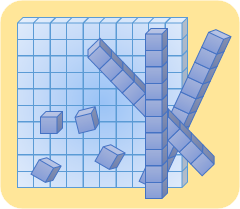
PLACE VALUE AND NUMBER NAMES
 |
Unit Overview
This unit focuses on place value. We will explore the various ways you can express a number.
Place Value and Number Names
Below is a model for the ones, tens and hundreds.
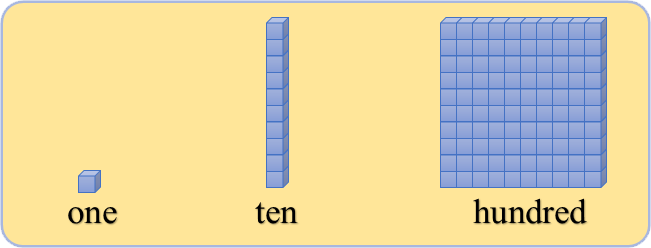 |
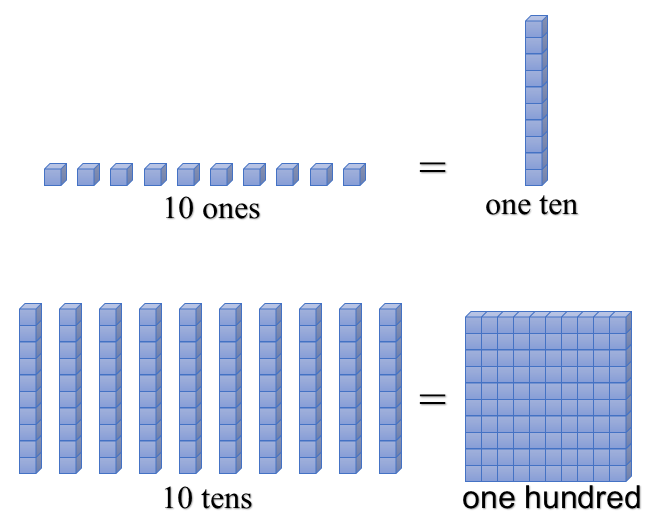 |
The Digits we use today are called "Hindu-Arabic Numerals" and look like these:
0 1 2 3 4 5 6 7 8 9
We can use these on their own to count up to 9:
|
Ten or More
When we have more than 9 items, we start another column - the "tens" column - and we write down how many "tens" we have, followed by how many "ones" (also called "units").
Example: this is how we write down twelve:
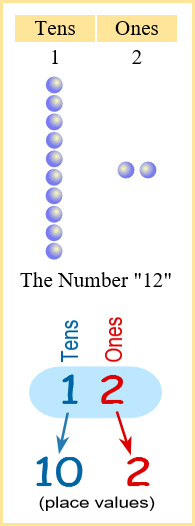 |
It says we have 1 Ten and 2 Ones, which makes 12.
This can also be written as 1 × 10 + 2 × 1.
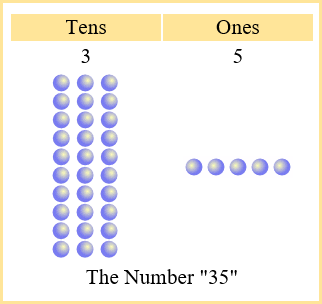 |
Zero
What if we have 1 Ten, but no Ones? We show "no Ones" by putting a zero there:
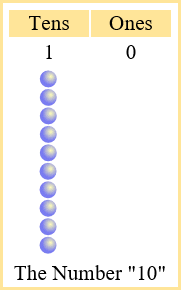 |
We have to put a Zero in the Ones place or "10" looks like "1".
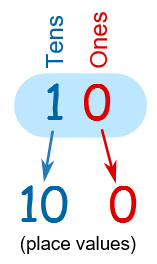 |
A Hundred or More
When we have more than 99 items, we start another column - the "hundreds" column. Now we need to show how many Hundreds, Tens and Ones: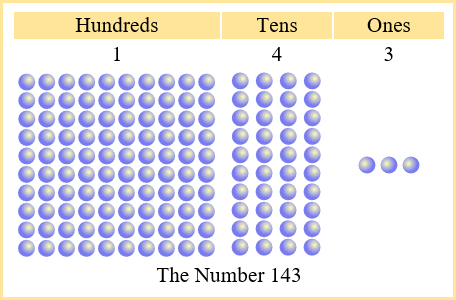 |
That shows we have 1 Hundred, 4 Tens and 3 Ones:
This can also be written as 1 × 100 + 4 × 10 + 3 × 1.
Names of Each Column
Each time we want to show a bigger number we just add one column to the left and we know it is always 10 times bigger than the column on its right.
Each new column on the left is ten times bigger! So, where we PLACE a digit is important!
 |
Click on the link to watch the video "Finding a number's place value".
| Base Ten Worksheet | |
| Expanded Form Worksheet |